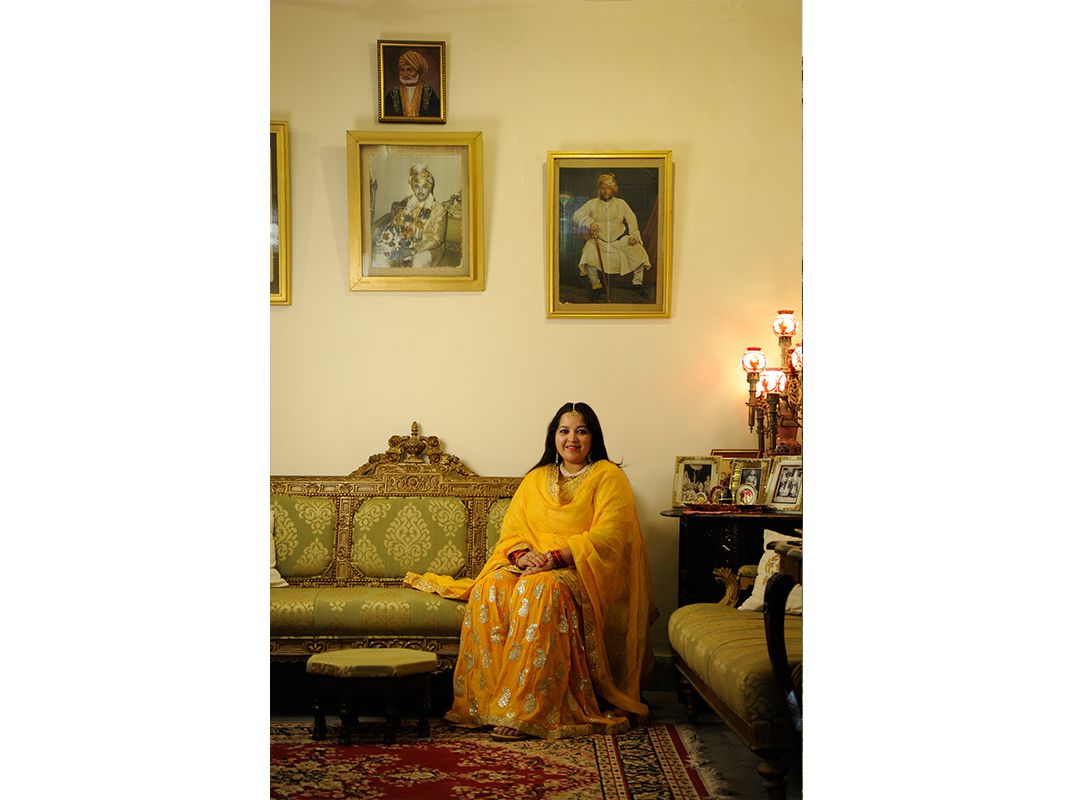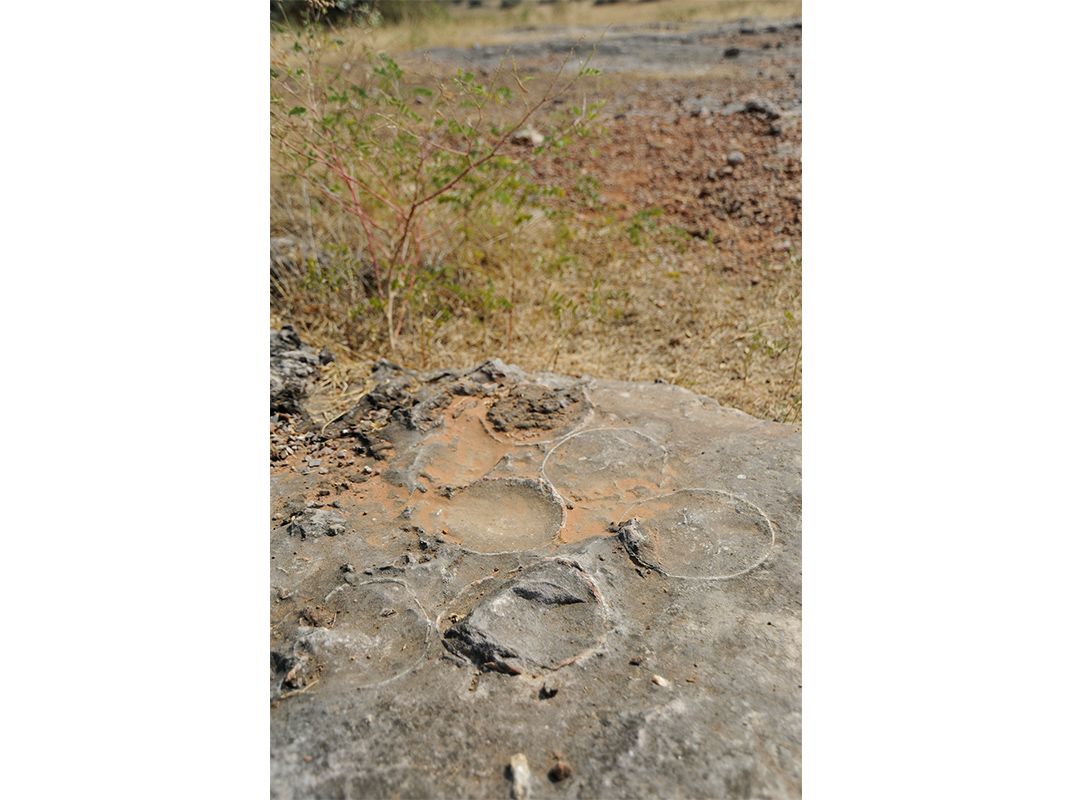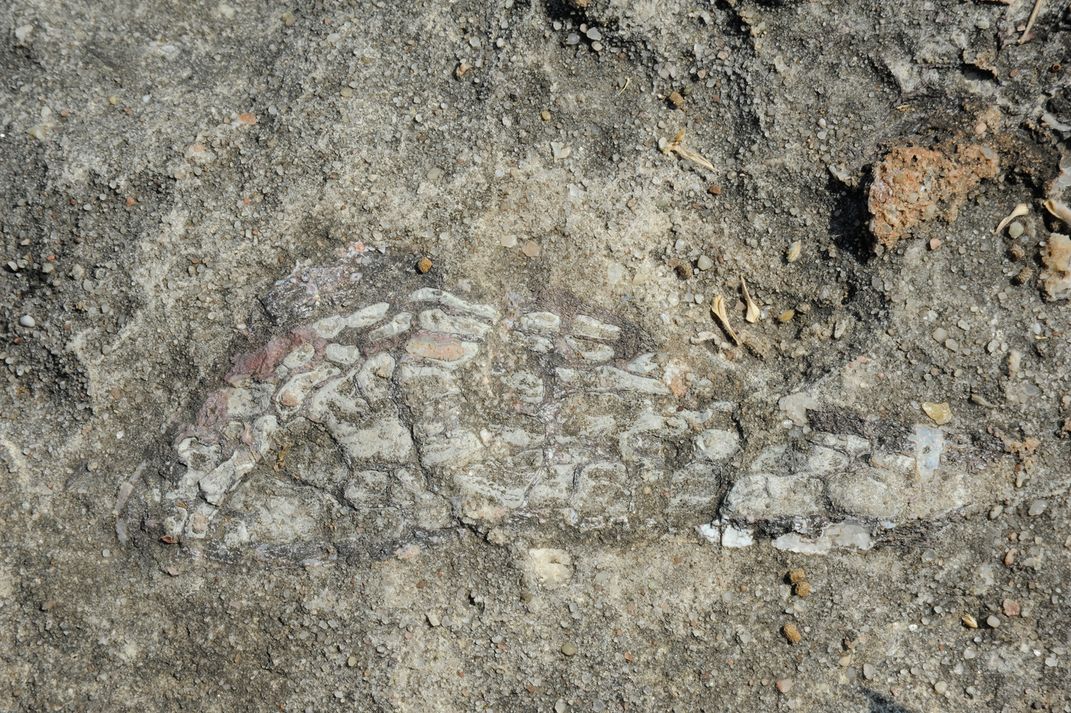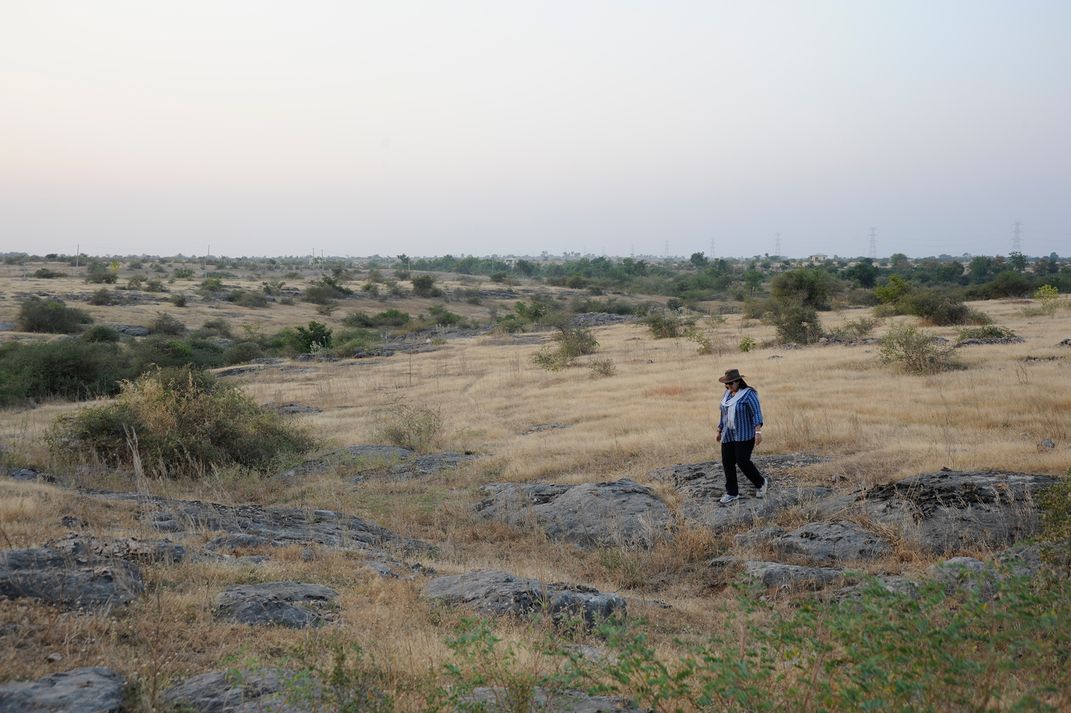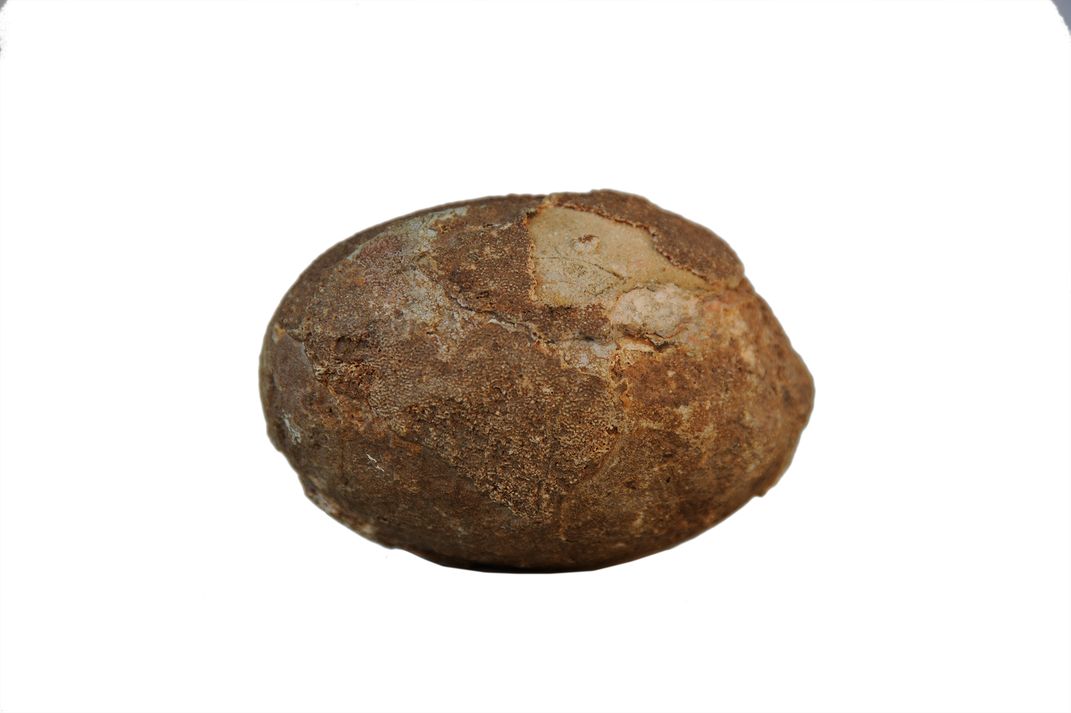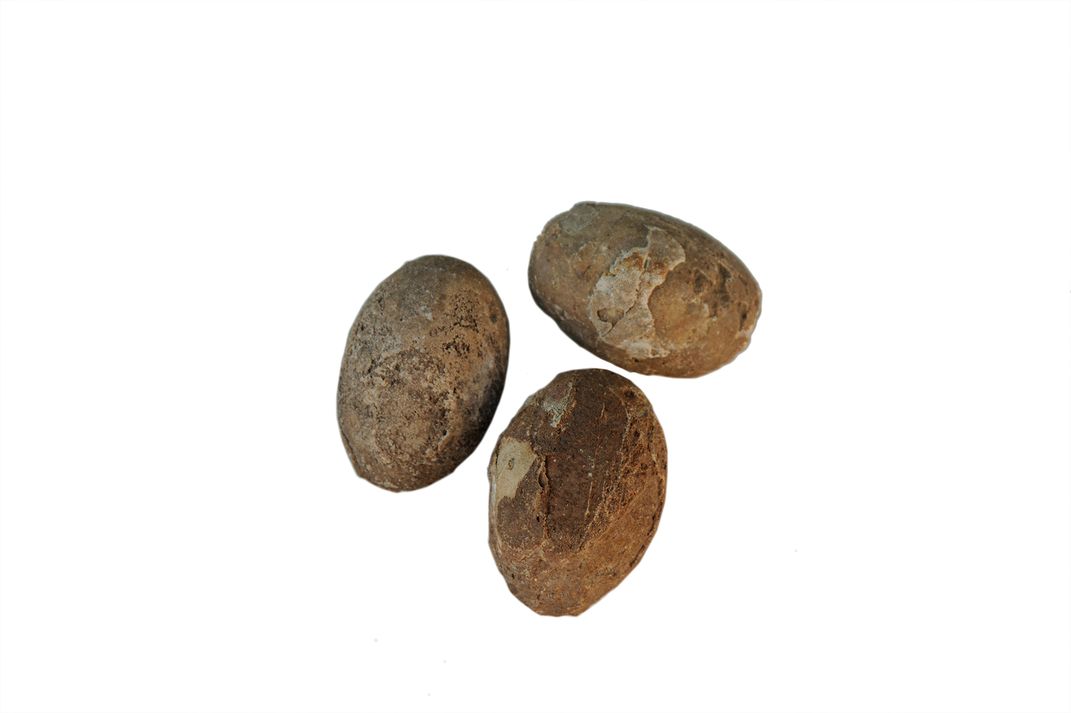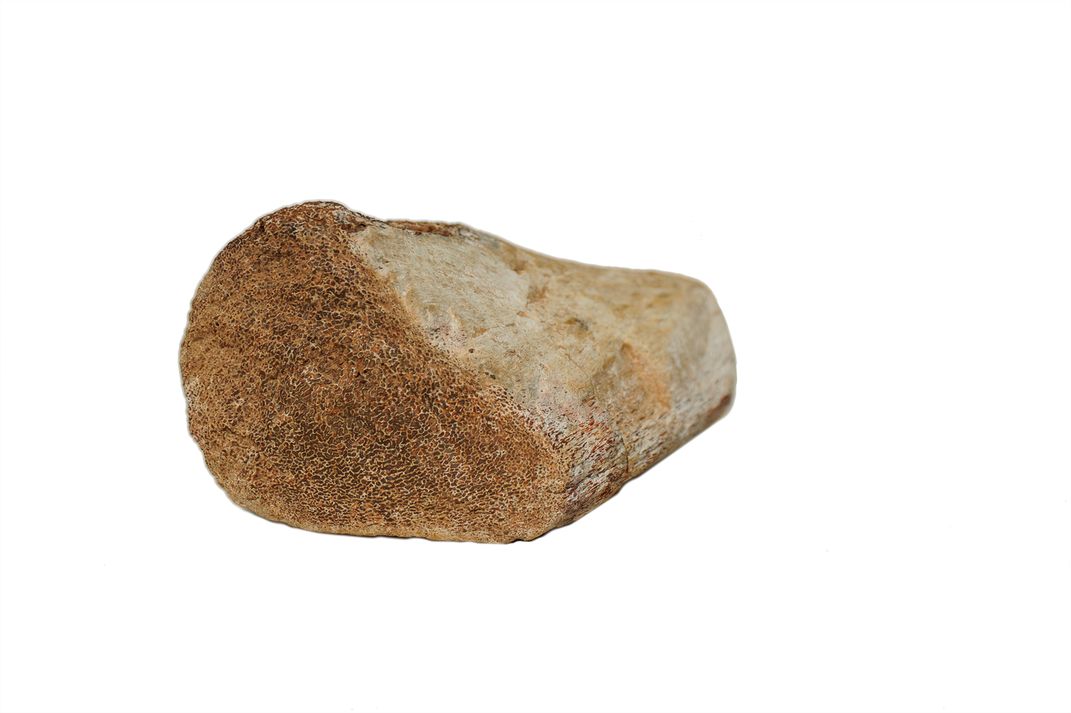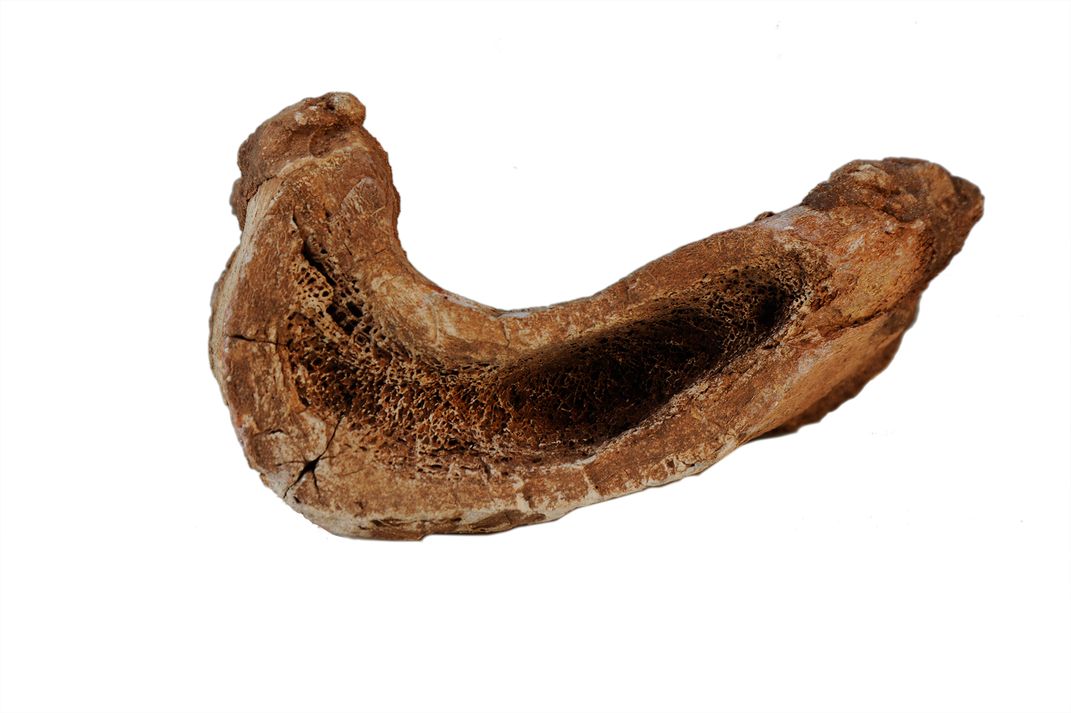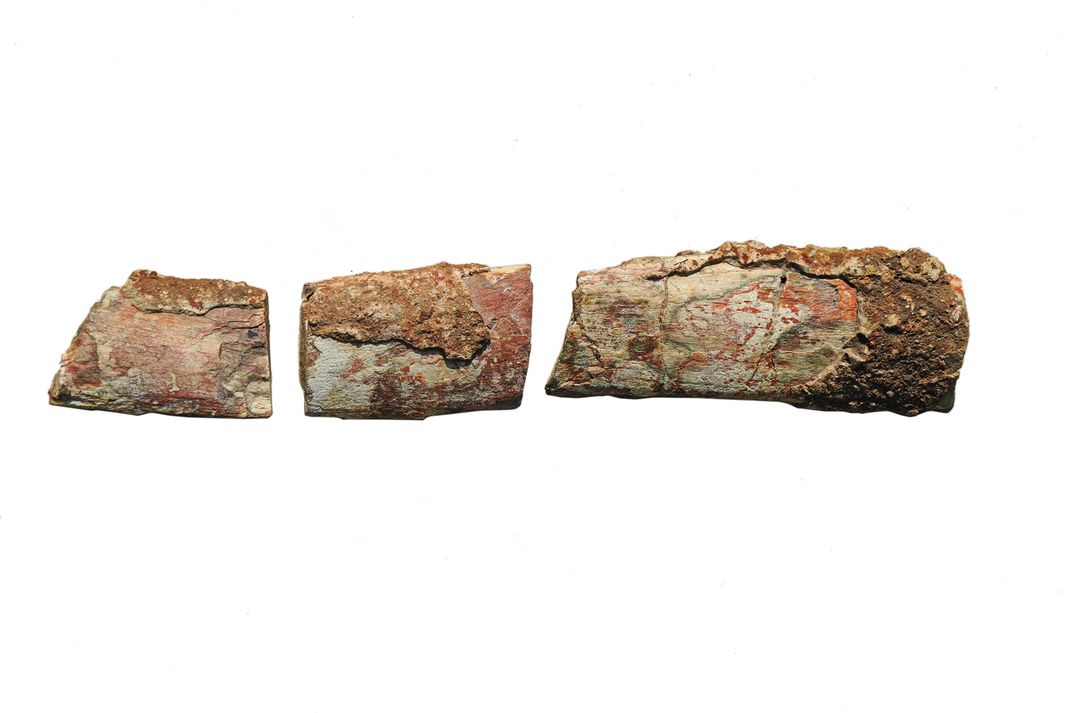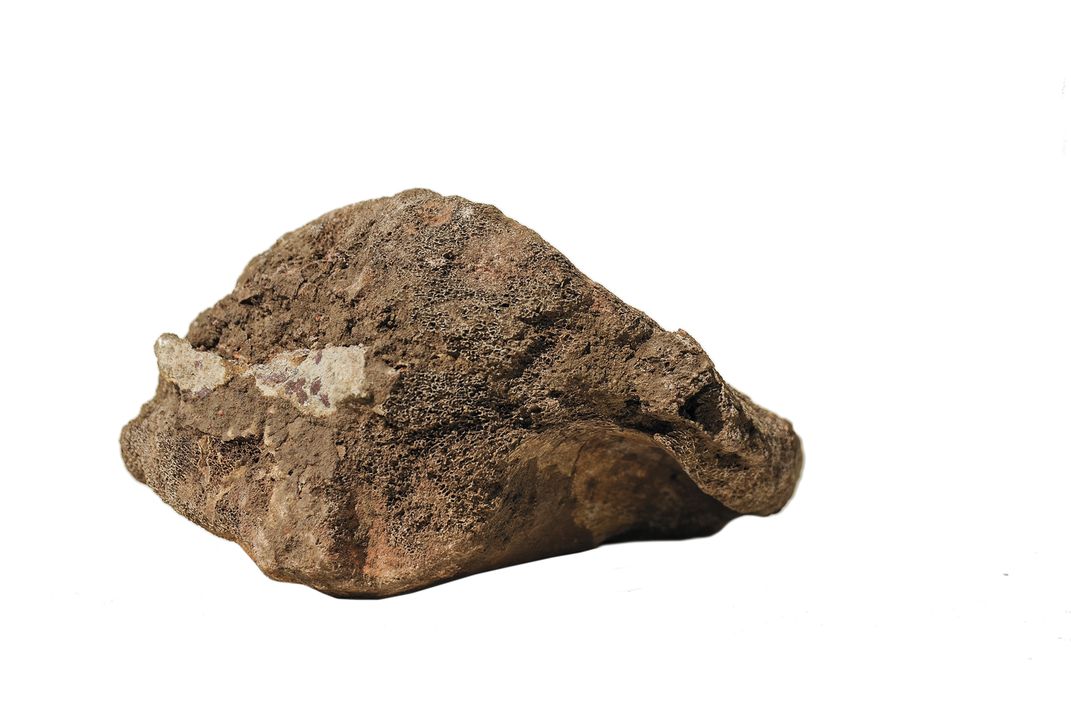Meet India’s Dinosaur Princess
Aaliya Sultana Babi is doing everything in her power to protect and promote India’s most significant fossil park
/https://tf-cmsv2-smithsonianmag-media.s3.amazonaws.com/filer/0b/87/0b87b7f2-414c-4626-8070-d10aa1515b6f/sqj_1601_india_fossils_01.jpg)
Once upon a time—in October 2003, to be precise—an old woman with magical culinary skills lived in an Indian village called Raiyoli. She was renowned throughout the area: Her curries would cure ailments, hypnotize officials, calm the angry and excite the unruffled. It happened that Aaliya, a young princess, was doing the rounds of her estate one evening when she passed the old woman’s hut. An intoxicating aroma filled the air and enticed her inside. The princess found the old woman grinding spices with a strange mortar and pestle, then mixing them into a curry that was slowly cooking on an earthen stove.
The princess asked the old woman her secret. She replied, “It is the mortar and the pestle.” They were unusual. Unlike the etched, sculpted sets available in the village bazaar, these were very rough, in strange hues of brown and gray. The old woman said she had found them ages ago in a nearby wilderness. The mortar was a flat, heavy piece of rock with a depression. The pestle was particularly unique: an oval stone, with a curved bottom and tiny pores that ground the ingredients into powder flawlessly.
The princess took the pestle in her hand, looked at it closely and asked the old woman if she could keep the mysterious utensil. The woman refused; the princess persisted. Villagers gathered, and an hour later, with community consent, it was decided that if the princess replaced the pestle with one from the royal kitchen, she could keep this one. The deal was sealed, and the pestle reached the palace.
A few months later, the princess revealed the secret of the old woman’s magical curries: a pestle that was really a dinosaur egg.
The recovery of the pestle-egg is just one episode in a saga of discovery and struggle—of a princess, Indian and American scientists and a seemingly forsaken landscape littered with hundreds of dinosaur bones, teeth, skulls and eggs tens of millions of years old.
Raiyoli is now part of a protected area in West India’s Gujarat state called Balasinor Dinosaur Fossil Park—regarded as the most significant site for dinosaur remains in India. And Aaliya Sultana Babi, a member of the royal family of the Balasinor Estate, has been dubbed by various media the “Dinosaur Princess.” She has become a protector and promoter of the site, which was discovered in 1981 yet remains largely in a state of neglect.
The two-hour journey from the airport in Ahmedabad, the capital of Gujarat, to Balasinor is like traveling from the 21st century to the Jurassic age. Ahmedabad has been called the “Manchester of the East” because of its heavy industry, and it now also boasts modern glass buildings and multinational food chains like McDonald’s. Outside the city, however, the highway is lined with tobacco, cotton and rice farms where women work the fields in bright-colored saris. In the small town of Balasinor, once ruled by Aaliya’s ancestors from the Babi dynasty, the regal past is only faintly visible in buildings now moldering from disrepair.
When I reach the palace of the Babi dynasty, now converted into an eight-bedroom hotel, Princess Aaliya greets me. In her early 40s, she is dressed in flowing pink shirt and trousers and an intricately embroidered scarf. It is a warm September afternoon, and her diamond-studded earrings, bangles and rings magnify the brightness of the day. “Hope you found the palace easily,” she says cheerfully.
The yellow palace, built in 1883, is surrounded by gardens of rosebushes and massive fig trees. (It is from these that the hotel takes its name, the “Garden Palace.”) Guests are served delicacies from the royal kitchen. Fruit bats flitter amid the tall trees. A grand portico graces the front of the palace; it is here that the princess and her family host paleontologists, scientific researchers, writers and painters who travel to the region to learn about its deep past.
The nawab, Muhammed Salabat Khanji II, is the titular ruler of the Balasinor Estate. He and his wife, Begum Farhat Sultana, Aaliya’s parents, still believe in the old guidelines of royal behavior. As I enter the sitting area, I overhear the nawab, now in his 70s, asking a staff member to fetch the appropriate hat for a particular occasion: He complains that a Jinnah cap, named after Pakistan founder Mohammed Ali Jinnah, is not acceptable for a dinner with religious leaders; only a Turkish hat will do. “You have to follow the protocols, isn’t it?” says the nawab after he catches me overhearing the conversation. A big smile spreads below his twirled mustache: “Hope you are liking your stay here,” he adds, speaking a bit more formally than his daughter.
The nawab sits on a sofa near a photograph of his coronation. It was taken a few days after his father passed away, when the nawab was just nine months old. The estate joined the Union of India in 1948 on the promise of a privy purse to be paid by the Indian government. After 1971, when the government abolished the practice of giving allowances to royal families, many converted their palaces into heritage hotels. Aaliya was born three years later. She now runs the hotel along with her younger brother, Salauddin Khan Babi, and almost singlehandedly works for the conservation of the Balasinor fossil park, which is on the land of her ancestors.
It was in winter 1981, when Aaliya was just a small child, that scientists from the Geological Survey of India (GSI) chanced upon fossils in the sedimentary rocks of Raiyoli village. The geologists had been blasting in a cement quarry when they found some unusual stones the size of large grapefruits. Around the same time, they also discovered fossils at nearby sites. Lab work later determined that the finds were dinosaur eggs and bones. “I was in a boarding school when an orderly from my father’s office informed me about the discoveries,” says Aaliya. Over the next few years, while Aaliya was away, paleontologists collected hundreds of bones from Balasinor and neighboring areas of the Narmada River Valley.
When Aaliya finished school and came back to Balasinor, she wanted to attend a college in a bigger city, but coming from a patriarchal royal family with a strict code of conduct for women, she was not allowed to move outside of her ancestral town. In 1995, she enrolled at a local college but became a recluse. “I did not have friends because I could not relate to them,” she tells me.
It was then that Aaliya became more interested in the region’s prehistory. The release of two Hollywood blockbusters, Jurassic Park and The Lost World, further fueled her imagination. But what turned an interest into an obsession were the visits to the hotel by geologists and paleontologists. “It was sometime in the year 2000 my father asked me to accompany a few international paleontologists to the fossil reserve because no one was available to give them direction in English,” says Aaliya. And thus she began to explore her kingdom as she never had before.
For the next two years, her visits to the site were more as an English translator than a curious student. Then, in 2002, when scientists from the Geological Survey of India were studying the area, Aaliya’s mother visited the fossil grounds for the first time. A geologist told her, “Begum Sahiba, you are standing over a dinosaur,” pointing to the rock under her feet. Aaliya was listening nearby, and in that moment, she was hooked. “It was that which totally intrigued me,” Aaliya recalls.
Eventually, the princess learned to differentiate between a fossil and a stone, and learned some basics on how to handle the fossils and clean them. But she still felt starved for information. “We had a dial-up Internet connection, you see. It was slow, and only an hour of browsing used to cost us a bomb [an exorbitant amount] each month,” she tells me.
So she started writing to paleontologists, geologists, and other scientists, asking them to mail her research papers and books that had any reference to Balasinor. Thanks to these materials, she was able to identify the old woman’s pestle as a dinosaur egg. They also spurred her enthusiasm for the possibility of dinosaur tourism to her family’s estate. She painstakingly recovered similar fossils —bones, eggs, crests and teeth—which she now shows to visitors at the Garden Palace.
The Balasinor fossil park is just a half hour drive from the palace in a green, undeveloped stretch of land situated on the outskirts of Raiyoli village. Some 637 families make their living there farming or raising cattle. Aaliya is now dressed in boots, hat, blue denim and a shirt. Her diamonds are left at home. Dozens of villagers wave or salute as her car passes by. She happily reciprocates by tipping her hat. Against the orange hue of the setting sun, the life-size models of dinosaurs in the park look almost real.
The park is guarded by an old man in a uniform who opens the gate as soon as he sees Aaliya’s car approaching. There are no tickets, no audio guides and no signboards. He is the only staff person in the reserve.
The plush greenery peppered with big and small boulders, and the vast horizons of this pristine fossil reserve are breathtaking enough. But Aaliya is a performer, and she wants to fill my imagination more. She asks me to participate in an exercise, directing me to identify different parts of a dinosaur’s body in the rocks around us. I fail miserably. So she directs me to a spot that overlooks a 30-foot stretch of stone with numerous fossils protruding from the ground. “You may be looking at the remains of an entire dinosaur, right in front of you,” she says.
She then identifies broken bits of thighbone, spine, vertebrae, teeth, an impression of scaly skin, and finally the crest of the dinosaur. “You are walking around the remains of a Rajasaurus,” she explains. “Mother Earth has her ways of protecting and preserving, right?”
It was only in the early 2000s that a new dinosaur was identified and given the genus and species name Rajasaurus narmadensis, which means “regal reptile of the Narmada.” A hefty, horned, 30-foot-long predator (9 meters), it lived in the Cretaceous period, roughly 65 million years ago. It devoured long-necked sauropods, herbivores that also roamed these areas. The remains were pieced together by Jeffrey Wilson, a professor and associate curator of the Museum of Paleontology at the University of Michigan, and Paul Sereno, a professor of paleontology at the University of Chicago. They worked with bones collected over many years by a team of GSI researchers led by Suresh Srivastava and P. Yadagiri, who mapped the site in detail. It was the first reconstruction of a dinosaur skull ever assembled from remains collected in India, and it can now be seen at the Indian Museum in Kolkata (Calcutta).
Scientists believe that the Rajasaurus may be a distant cousin of the Abelisaurus, a dinosaur that apparently inhabited Africa, South America and Madagascar. They posit that in prehistoric times these regions were once joined together in the giant continent Gondwana.
“India is a very special place in terms of understanding life through time,” says Wilson, reached by phone at his university office. He explains that the region was once a massive island floating from south to north, until it crashed into Asia and formed the Himalaya. Scientists want to determine if the island developed endemic fauna during that time. If it was isolated for millions of years, it should have—but so far no such evidence has been found.
As Aaliya and I roam around, a group of visitors drives into the park: a few middle-aged men and women with teenage children. They hop from rock to rock, stepping over the fossils with soft drinks and packets of chips in their hands. Disappointment flushes their faces as they cannot distinguish one rock from another and cannot identify the fossils. They leave in 15 minutes.
Over the past two decades, Aaliya has started conducting guided tours to fill the void. Initially, she would give free tours, but people would continue to chat among themselves and not pay attention. “To filter those types, I now make them pay,” she adds. She charges $5 a person, for which she helps visitors find and understand fossils, like the concave structures marked by white rings we now find behind a bush.
The site is similar to one that she doesn’t show to visitors because of fears that it will be further vandalized, but she has a photo and shows that to me now. In 1984 a fossilized egg and a half-yard (half meter) dinosaur hatchling were found here, and many years later Wilson looked at the fossil and noted what seemed to be parts of a fossilized snake. After more research, he determined that a 3.5-yard-long (3.2 meters) snake was coiled and fossilized around the egg and the hatchling. The discovery was a valuable example of non-dinosaurian predation on dinosaurs. The newly identified dinosaur-eating snake was called Sanajeh indicus, from Sanskrit words meaning “ancient gaped one from the Indus River.”
Unfortunately, the predation on dinosaurs—or at least their remains—has not stopped. Aaliya points out big cavities where thieves have plucked out dinosaur eggs. There is minimal policing of this remote area, and vandalism has taken a toll. Villagers sometimes sell fossils from roadside carts, just as they sell guavas and tomatoes.
“A stolen fossil not only loses its scientific importance but also thwarts major related discoveries, which is all the more reason governments should take it seriously,” says Dhananjay Mohabey, a top GSI paleontologist who has extensively researched dinosaur fossils from Balasinor and found the original fossil of the Sanajeh indicus.
The state government has put some raggedy barbed wire around the 72-acre reserve, appointed a security guard and constructed a building with huge models of different dinosaurs. The building was supposed to be a museum but has not been functional since its completion several years ago. “We have plans for the fossil reserve, and we will execute them soon,” says S. J. Haider, tourism secretary for the state of Gujarat, in response to questions about apparent government neglect.
Meanwhile villagers still illegally take their cattle to the reserve for grazing. Once when Aaliya tried to explain why they should not do that— because the cattle will trample and potentially harm the dinosaur fossils—an elderly woman replied, “Why do you want to starve those who are alive for the dead from millions of years ago?”
“These arguments are complex,” the Dinosaur Princess tells me as we drive back from our tour of the park. “The old woman did get me thinking. But I have to do what I can to protect the history of those who roamed around in the land of my ancestors.”
